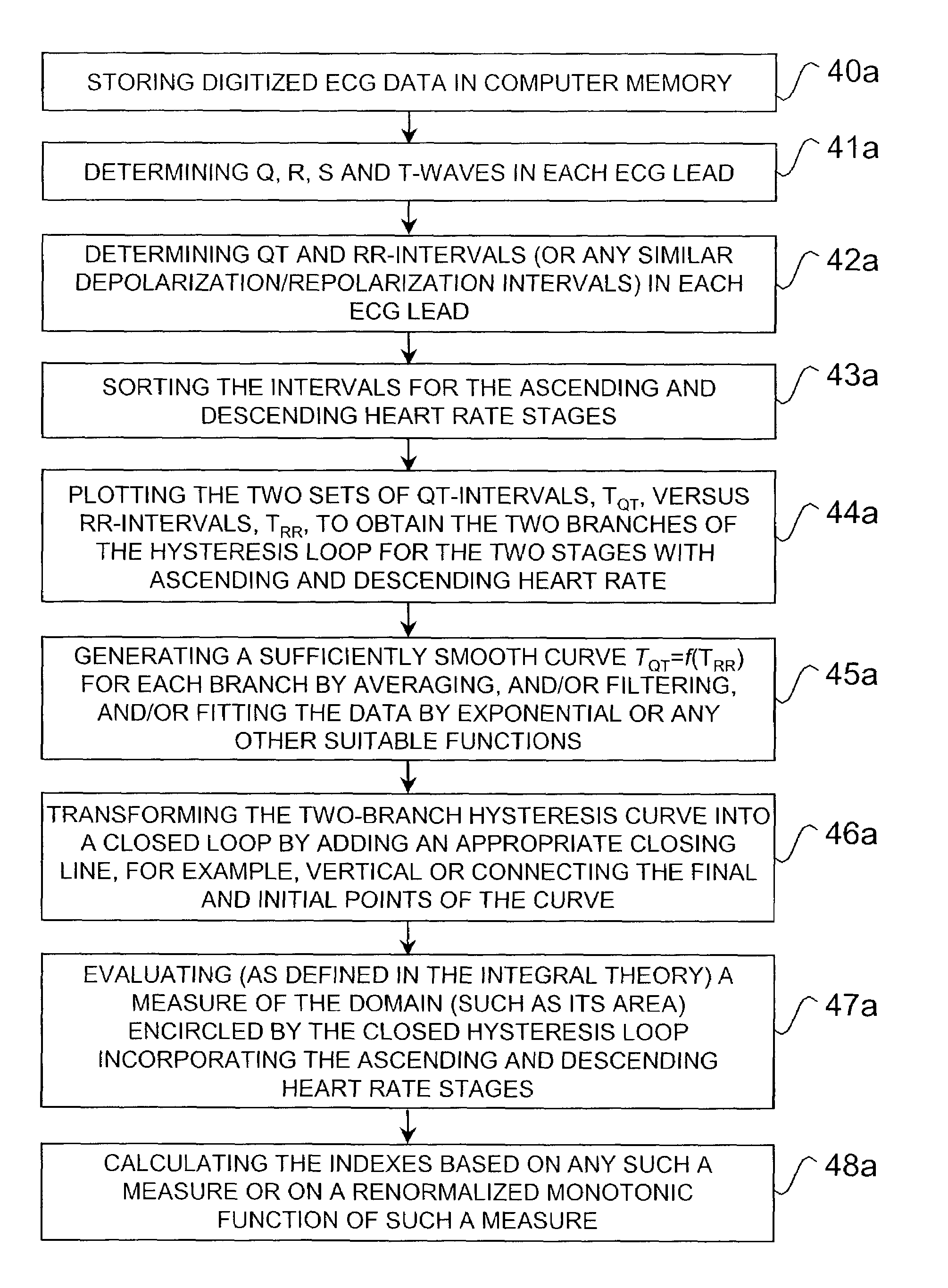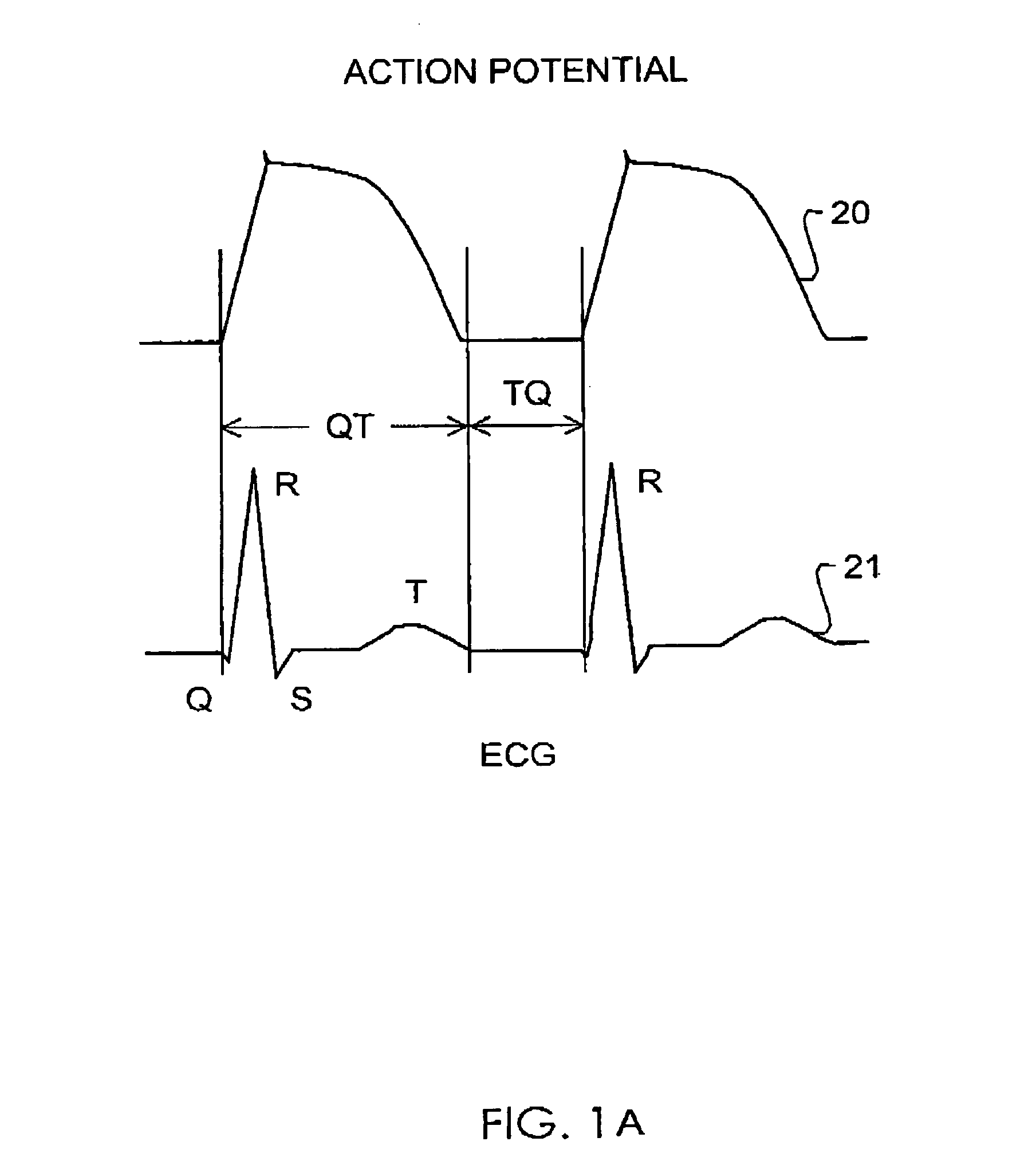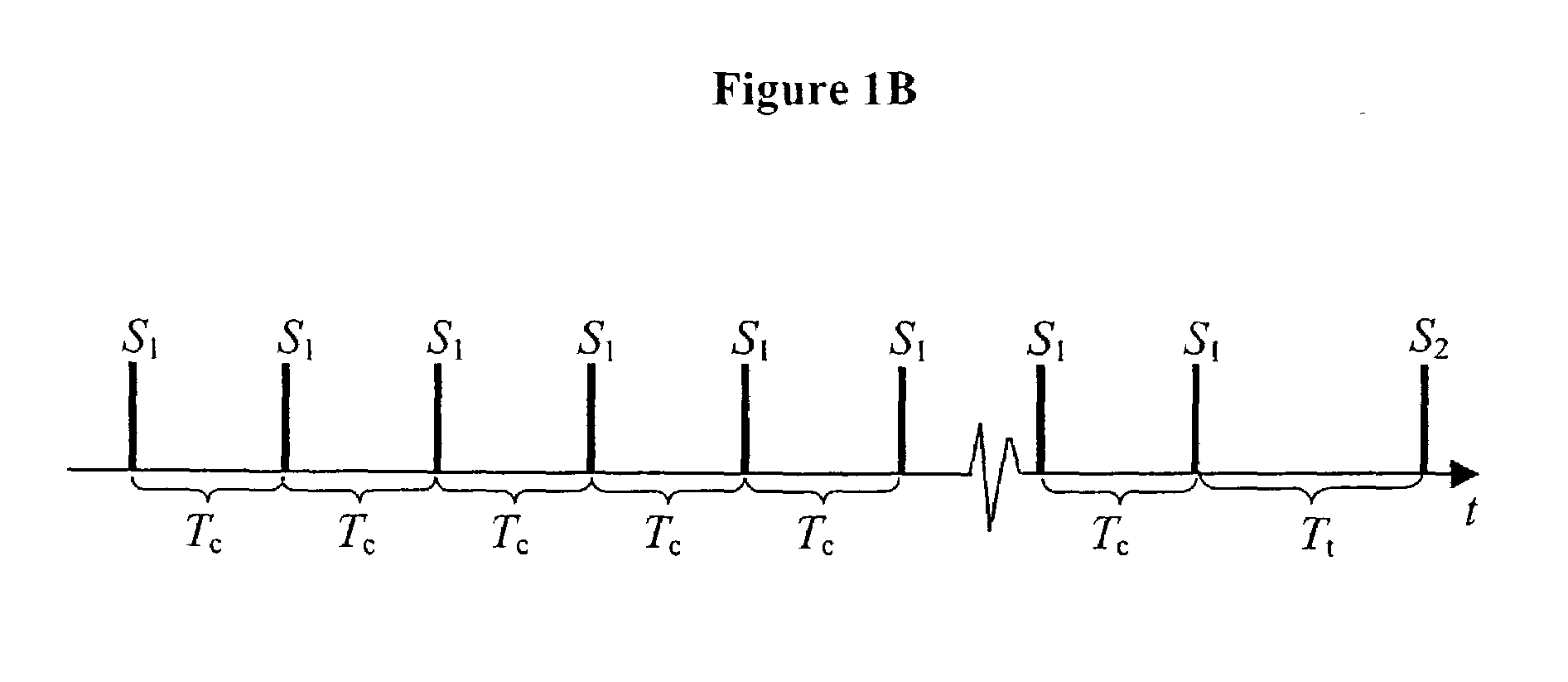Method and system for evaluating arrhythmia risk with QT-RR interval data sets
a risk assessment and data set technology, applied in the field of noninvasive assessment of cardiac arrhythmia risk, can solve the problems of malignant arrhythmia, higher risk of arrhythmia in such a subject, and inability to sensitivity in defining risk stratification through means, and achieve the effect of simple equipmen
- Summary
- Abstract
- Description
- Claims
- Application Information
AI Technical Summary
Benefits of technology
Problems solved by technology
Method used
Image
Examples
example 1
Testing Apparatus
[0165]A testing apparatus consistent with FIG. 3 was assembled. The electrocardiograms are recorded by an RZ153PM12 Digital ECG Holter Recorder (ROZINN ELECTRONICS, INC.; 71-22 Myrtle Av., Glendale, N.Y., USA 11385-7254), via 12 electrical leads with Lead-Lock Holter / Stress Test Electrodes LL510 (LEAD-LOK, INC.; 500 Airport Way, P.O. Box L, Sandpoint, Id., USA 83864) placed on a subject's body in accordance with the manufacturer's instructions. Digital ECG data are transferred to a personal computer (Dell Dimension XPS T500MHz / Windows 98) using a 40 MB flash card (RZFC40) with a PC 700 flash card reader, both from Rozinn Electronics, Inc. Holter for Windows (4.0.25) waveform analysis software is installed in the computer, which is used to process data by a standard computer-based waveform analyzer software. Restitution curves and an indicium that provides a quantitative characteristic of the extent of susceptibility to cardiac arrhythmias are then calculated manuall...
example 2
Restitution Curves' Slopes and Power Spectra of the QT and RR Interval Fluctuations in Healthy Subjects of Different Ages
[0167]This example was carried out on three male and two female subjects with an apparatus and procedure as described in Example 1 above. Referring to FIGS. 5–6, one can readily see a difference in the slopes of the restitution curves and the power spectra of the QT and RR interval fluctuations of generally healthy subjects of different ages. These subjects exercised on a treadmill according to a quasi-stationary 20-minute protocol with gradually increasing and gradually decreasing exercise load. A beat sampling rate with which a waveform analyzer determines QT and RR intervals is equal to 15 samples per minute. Neither of the subjects had a conventional ischemia-induced depression of the ECG-ST segments, however one . . . year old female subject had 60 premature ventricular contractions and three very short (15–20 consecutive beats) episodes of non-sustain ventri...
example 3
Restitution Curves' Slopes and Power Spectra of the QT and RR Interval Fluctuations for Subjects with a History of Coronary Artery Disease
[0168]These examples were carried out on 52-year-old female and 74-year-old male subjects with an apparatus and procedure as described in Example I above. Both subjects had a prior history of coronary artery disease. These subjects exercised on a treadmill according to a quasi-stationary 20-minute protocol with a gradually increasing and gradually decreasing exercise load. FIGS. 7 (curves 1,2) and 8 (1,2) illustrate the slopes and power spectra of the QT and RR interval fluctuations for the female subject when she exercised without and with taking beta-blocker medication, respectively. She had a relatively high number of premature ventricular contractions, 184 (FIG. 7, curve 2 and FIG. 8(2)), during exercise, revealing almost no reserve of stability of cardiac rhythm. The slopes were higher than a threshold value 0.5 during almost a whole interval...
PUM
 Login to View More
Login to View More Abstract
Description
Claims
Application Information
 Login to View More
Login to View More - R&D
- Intellectual Property
- Life Sciences
- Materials
- Tech Scout
- Unparalleled Data Quality
- Higher Quality Content
- 60% Fewer Hallucinations
Browse by: Latest US Patents, China's latest patents, Technical Efficacy Thesaurus, Application Domain, Technology Topic, Popular Technical Reports.
© 2025 PatSnap. All rights reserved.Legal|Privacy policy|Modern Slavery Act Transparency Statement|Sitemap|About US| Contact US: help@patsnap.com



